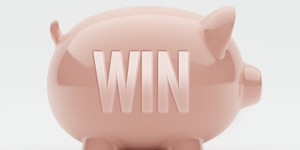Supporting a business environment with ever-decreasing budgets and ever-increasing requirements makes contract pricing a significant challenge. Being often excluded from continued consideration due to your competitors offering lower bids will have you scratching your head and wondering how anyone can do it for such as price.
Price-to-Win Strategy
Price-to-win is a strategy that requires very analytical thinking and many exercises in competitor analysis. First, it’s important to recognize the level of influence that pricing has on a specific opportunity. When reviewing the evaluation criteria, where does Price fall in the prioritization, and what weight is it given? In the event that the contract type isn’t identified as Lowest Price Technically Acceptable (LPTA), it is imperative you take into consideration the importance of pricing when laying out your proposal compliance matrix and win themes.
Typically, most of us wait until the end of the proposal development process to complete the pricing volume, and then it’s a race to the deadline to complete it. This IS NOT part of a price-to-win strategy. If you’ve invested time gaining intelligence through research and meetings, you should be gaining information on pricing as well.
Here are a few questions that will start the ball rolling: How was it priced during the last procurement cycle? Will the budget remain the same? Are the requirements remaining the same, or are they changing? Who is the competition? What price did they bid & win on similar contracts? Who is the incumbent? How badly do they want to keep this work?
The Price-to-Win process begins by modeling what the top competitors bid on the last procurement and mapping that price against the delivery requirements and associating the best analysis for where the price was derived from. Next, determine, based on other contracts bid and won by the competition, how they priced those deals (discounts, types of personnel used, types of products sold). Map in any discounts that you can assume they gave in order to win, and determine how badly they want to win (amount of new discount they most likely will apply). Once this has been done for each of the competitors, you now have a ranking by price of the expected bids by your competitors. You job is to determine how your company can beat the best price, win the deal, and then deliver profitably.
Your Price-to-Win Strategy
So how do you employ a Price-to-Win strategy?
- Ensure you have a solid understanding of your internal costs, and that you’re estimating them appropriately. These include all of your indirect costs – fringe, overhead, net profit (fee), general and administrative (G&A). If you’re guessing at these numbers, your pricing estimate is going to be inaccurate, which will cause you to overbid or underbid the contract
- Implement a realistic expectation of what ‘reasonable price’ means. Although you believe Bob’s experience is worth $130.00 per billable hour, is that price reasonable? In other words, how does that $130.00/hr price tag coupled with Bob’s experience relate to the commercial market and more importantly, to your competition?
- Pay attention to the procuring Agency’s award history as it relates to price
- How well positioned are you in all other areas? Is your technical and managerial approach completely aligned with what’s being asked? Are your capabilities a shoe-in for representative experience? An effective pricing strategy is supplementary support to back these other aspects
- How is your competition going to price their bid? Are they typically higher than you are? Are their capabilities more aligned? Can you provide a better solution or more advanced level of service for less money?
Your Price-to-Win strategy should incorporate the intelligence you’ve gained to support your pricing decision, and apply it based on all of the considered criteria. And, of equal importance, if you win at the proposed rate, can you sustain quality performance? Overall, is the proposed price equitable?


